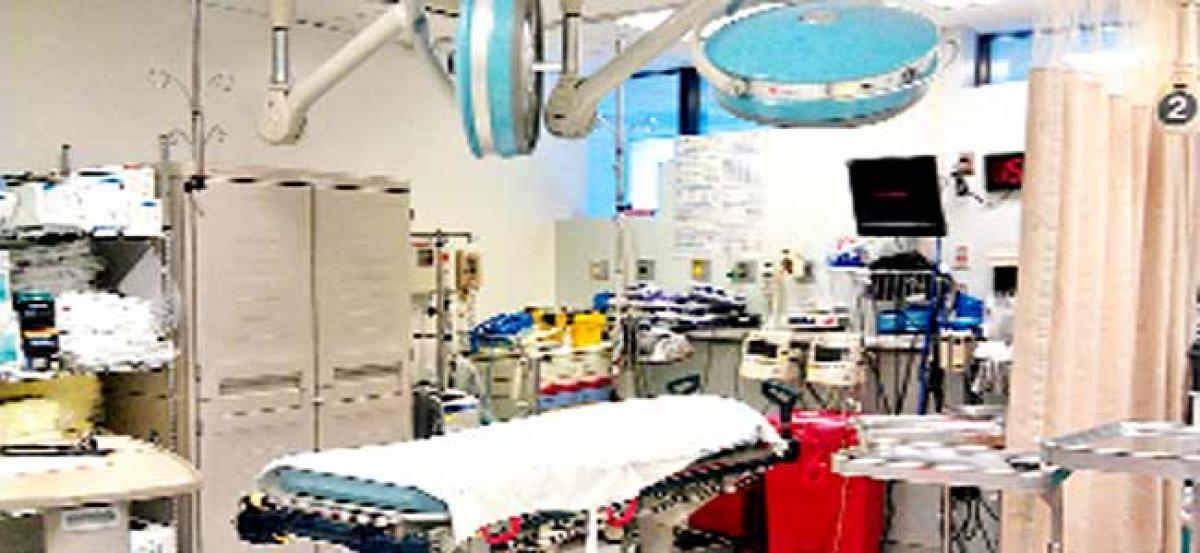Live
- Asha Worker died in a road accident
- Akshaya Tritiya 2024 Auspicious Hindu Festival on May 10th
- Celebrating World Veterinary Day 2024: Safeguarding Your Pet’s Vision with Expert Tips
- NSG joins CBI in searching residence of Sheikh Shahjahan’s relative
- Maharashtra: Peeved state unit Congress Working President quits 2024 LS polls campaign
- Archery World Cup: Deepika storms into individual semis; Compound Mixed Team in final
- Adopt zero-tolerance approach towards terrorism, India tells SCO member states
- Free haircut, 'mehendi' for women on offer as Maharashtra votes in Phase 2
- BJP president JP Nadda to visit Odisha on April 28
- Participation of women in workforce is a constitutional entitlement: SC
Just In

With a view to provide immediate treatment for accident victims, the Department of Health and Family Welfare identified Osmania General Hospital (OGH) to develop Level II Trauma Centre.
For providing definitive care for severe trauma patients
- Centre capable of providing definitive care
- Physicians, surgeons available on arrival
- On-call facility for neurosurgeons, paediatricians
- To have emergency department, ICU, blood bank
- Rehabilitation services, supportive services to be offered
- Centre to have multiple discipline approach
- Life-saving centre to be cost-effective
Hyderabad: With a view to provide immediate treatment for accident victims, the Department of Health and Family Welfare identified Osmania General Hospital (OGH) to develop Level II Trauma Centre.
According to operational guidelines, the department has considered the OGH as Level II Trauma Centre as it will provide definitive care for severe trauma patients. Emergency physicians, surgeons, orthopaedic and anaesthetists are available to the trauma patients immediately on arrival. It would also have an on-call facility for neurosurgeons and paediatricians. The centre will be equipped with an emergency department, intensive care unit, blood bank, rehabilitation services, broad range of comprehensive diagnostic capabilities and supportive services.
Speaking to The Hans India, Dr B Nagender, Superintendent, OGH said the hospital was nearby the National Highway so it took less time to shift the injured patients. The centre would come up with multiple discipline approach that would make available required orthopaedic, neurosurgeon and anaesthesia specialist, he said.
Explaining the difference between emergency department and trauma centre, Dr Nagender said all hospitals were required to promptly attend to all medical emergencies and hence must have emergency services. “The emergency departments are designed for a broad scope of minor to severe medical emergencies. While a trauma centre has a focused scope of practice and strict requirements for staffing, it has also specialists’ availability and response time to cater specifically to the critically injured,” he said.
Regarding trauma centre, the superintendent said the centre-based care not only saved lives, it was a cost-effective way of treating major trauma. “It is not an infrastructure concept but a concept in which the appropriate infrastructure, equipment and human resources work in tandem to provide necessary trauma care services to a patient,” he said.
About the overall objective of the centre, he said the centre was aiming to bring down preventable deaths due to road accidents to 10 per cent. “No trauma victim has to be transported for more than 50 kilometres,” he said.
Dr Nagender said the trauma centre could be a specialised area within a hospital building, adjoining to an existing hospital or a self-sufficient standalone facility in all aspects.
“This will allow patients to make sure that their needs are best met, depending on their clinical condition and local operational policies,” he said.

© 2024 Hyderabad Media House Limited/The Hans India. All rights reserved. Powered by hocalwire.com







